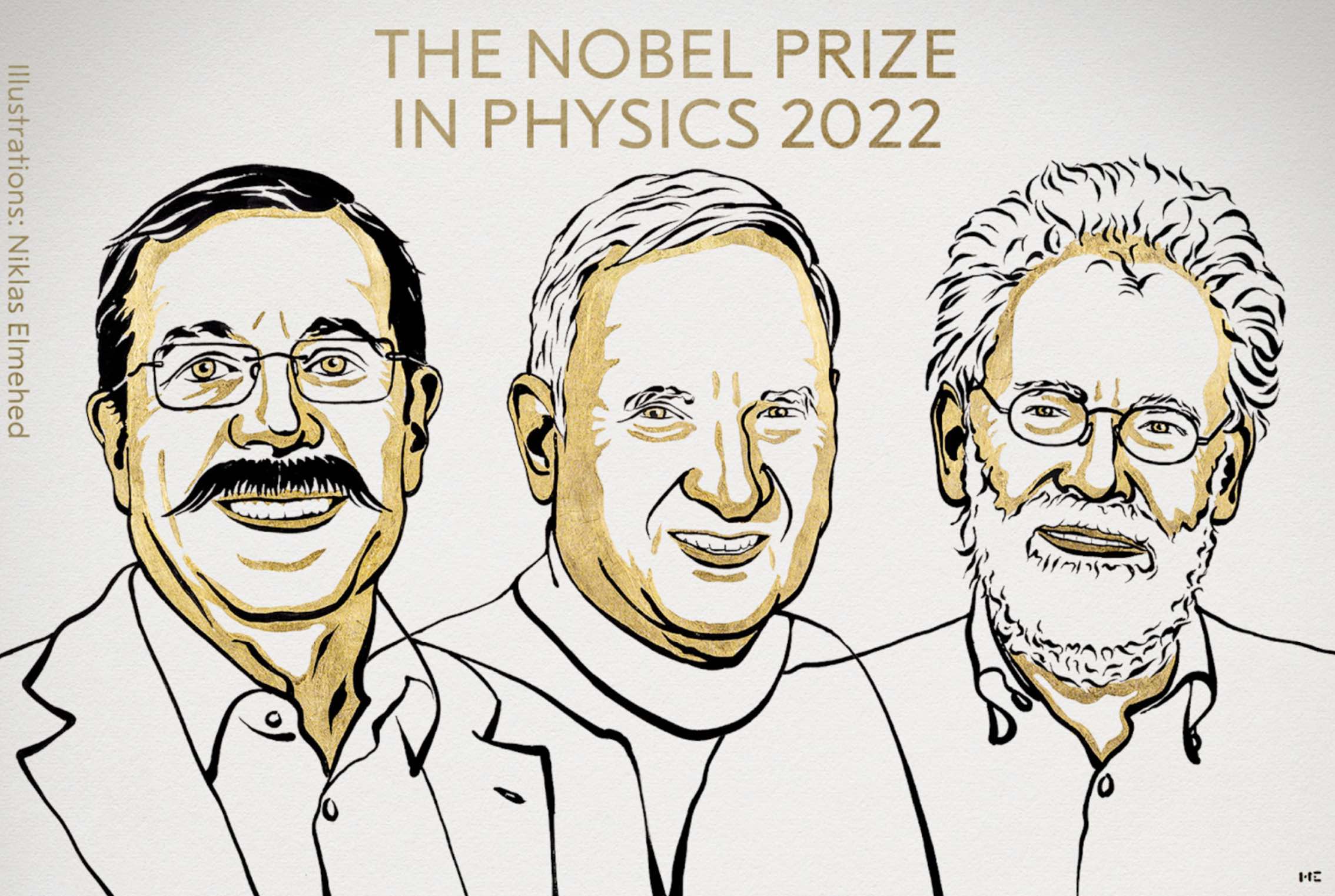Scientists studying quantum mechanics win Nobel Prize in Physics
Three experimental physicists were recognized for their foundational experiments in the field
Gwendolyn Rak • October 4, 2022

Alain Aspect, John F. Clauser and Anton Zeilinger, recipients of the 2022 Nobel Prize in Physics [Credit: Niklas Elmehed © Nobel Prize Outreach]
The 2022 Nobel Prize in Physics has been awarded to three experimental physicists for their pioneering work in quantum mechanics. Their experiments laid the foundation for real-world applications of quantum physics.
The prize is shared equally by Alain Aspect of the Université Paris-Saclay & École Polytechnique in France, John F. Clauser of California-based J.F. Clauser & Associates, and Anton Zeilinger of the University of Vienna in Austria.
The scientists developed an idea central to quantum mechanics known as “entanglement,” transporting it from the realm of theory and science fiction to physical experiments.
Quantum mechanics is a field often “portrayed as very weird and very mystical,” according to Thors Hans Hansson, a member of the Nobel Committee for Physics, in an interview after the award presentation. But Aspect, Clauser and Zeilinger’s work with entanglement, he said, is about “what quantum mechanics really means.” The experiments defend quantum mechanics’ counterintuitive principles against competing theories.
When the field was first developed in the early 20th century, scientists found that if two tiny quantum particles are linked, or entangled, measuring the characteristic of one would instantly determine that of the other, no matter how far apart they are. Albert Einstein famously called this “spooky action at a distance.” Some scientists, including Einstein, believed there were more undiscovered traits, or “hidden variables,” that contain information about the linked characteristic.
According to the theory of quantum mechanics, however, entangled particles have an inherent uncertainty that can’t be explained by hidden information. The new Nobel laureates’ experiments have each supported this conclusion, and proved Einstein wrong.
In 1972, American physicist John Clauser became one of the first to put the theory to the test by designing an experiment looking at entangled photon’s polarization — the orientation of the light particle’s vibrations. With filters similar to the lens in polarized sunglasses, Clauser was able to take data showing that hidden variables can’t determine the result of these measurements.
French physicist Alain Aspect later closed an important loophole related to the setup of Clauser’s experiment. In the early 1980s, Aspect changed the experiment’s configuration so the detectors involved could switch settings after the twin particles were emitted. With this change, Aspect ensured that the experiment’s setup could not change the results, confirming Clauser’s results.
In a series of experiments beginning in 1997, Austrian physicist Anton Zeilinger began using the ideas of quantum entanglement with more than two particles. Zeilinger demonstrated quantum teleportation in the lab, instantaneously transferring information between photons a meter apart. Entangling more particles allows physicists to build networks of particles, forming the foundation of technologies like quantum encryption.
In a live phone call with laureate Anton Zeilinger at the award ceremony, the physicist said he was pleased and surprised to get a call from the Nobel Committee. Zeilinger acknowledged the many physicists he’s worked with throughout his career who made this work possible.
He advises today’s young scientists to “do what you find interesting and don’t care too much about possible applications.”
The experiments recognized today by the Nobel Committee have deep implications for practical uses in quantum computing and cryptography. But committee member Hansson believes the work is prize-worthy even without these applications. Regardless of the impact on our daily lives, he said, “it’s still wonderful that we can understand these things.”